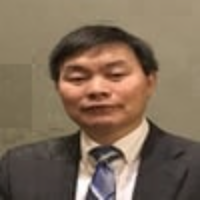Cytology and DNA Analysis of Ameloblastoma - A Case Report
Published on: 23rd January, 2017
Ameloblastoma is a benign odontogenic tumour that may have aggressive biological behavior with local recurrence and metastasis after the surgical resection. We report a case of cytology of recurrent ameloblastoma. The first tumour was diagnosed in the left mandible in 57-yers-old woman thirteen years ago. The patient was operated on, the tumour was enucleated, pathohistological diagnosis of ameloblastoma was put and DNA analysis by flow cytometry of the tumour was performed. DNA analysis showed that the tumour was diploid but proliferative. Two years after the operation, a new tumour appeared on the scar. Fine needle aspiration cytology with ultrasound guidance of the tumour was performed; cytological diagnosis of recurrent ameloblastoma was put and confirmed by pathohistology. Until now the patient is well without any new recurrent ameloblastoma.
Is advanced Coupling Methods best fitted in Biosensing of Microparticles?
Published on: 17th July, 2017
OCLC Number/Unique Identifier: 7317651486
Microparticles (MPs) are considered important diagnostic biological markers in many diseases with promising predictive value. There are several methods that currently used for the detection of number and characterization of structure and features of MPs. Therefore, the MP detection methods have been remained pretty costly and time consuming. The review is depicted the perspectives to use coupling methods for MP measurement and structure assay. Indeed, there is large body evidence regarding that the combination of atomic force microscopy or coupling nanoparticle tracking analysis (NTA) with microbeads, plasmon resonance method and fluorescence quantum dots could exhibit much more accurate ability to detect both number and structure of MPs when compared with traditional flow cytometry and fluorescent microscopy. Whether several combined methods would be useful for advanced MP detection is not fully clear, while it is extremely promising.
Characterization of the immune response in neuroimmune disorders in children
Published on: 20th April, 2021
OCLC Number/Unique Identifier: 9026721284
Background: A misguided auto-reactive injury is responsible for several types of central nervous system (CNS) conditions in pediatrics. We propose that, in some of these conditions, the adaptive immune system has a common cellular immune pathogenesis, driven predominantly by T cells, despite variability on the phenotypical clinical presentation.
Methods: We have characterized the CD4+/CD8+ adaptive immune response (AIR) on pediatric patients presenting with clinical symptoms compatible with Neuroimmune Disorders (NID). Flow cytometry with deep immunophenotyping of T cells was performed on peripheral blood obtained during the acute clinical phase and compared to an age-matched cohort group (Co).
Results: We found that pediatric patients with confirmed NID, exhibit a pattern of dysregulation of CD4+ lineages associated with autoimmune processes.
Discussion: The autoimmune associated CD4+ dysregulation was associated with patients with NID, as compared to healthy controls and patients with non-autoimmune diagnoses. If we can improve our capacity for early accurate diagnosis and meaningful disease monitoring of pathogenic T cell subsets, we can both expedite disease detection and may serve as a guide to the administration of effective immunotherapeutic agents.
Flow cytometry potential applications in characterizing solid tumors main phenotype, heterogeneity and circulating cells
Published on: 24th August, 2021
OCLC Number/Unique Identifier: 9213084224
Flow cytometry (FCM) is a unique technique that allows rapid quantitative measurement of multiple parameters on a large number of cells at the individual level. FCM is based on immunolabelling with fluorochrome-conjugated antibodies, leading to high sensitivity and precision while time effective sample preparation. FCM can be performed on tissue following enzymatic or mechanical dissociation. The expression of epithelial antigens and cytokeratin isoforms help in distinguishing tumor cells from adjacent epithelial cells and from tumor infiltrating leukocytes. Tumor phenotypes can be characterized on expression intensity, aberrancies and presence of tumor-associated antigens as well as their cell proliferation rate and eventual heteroploidy. FCM can measure quantitative expression of hormone or growth factor receptors, immunoregulatory proteins to guide adjuvant therapy. Expression of adhesion molecules tells on tumor’s capacity for tissue invasion and metastasis seeding. Tumor heterogeneity can be explored quantitatively and rare, potentially emerging, clones with poor prognosis can be detected. FCM is easily applicable on fine needle aspiration and in any tumor related biological fluids. FCM can also be used to detect circulating tumor cells (CTC) to assess metastatic potential at diagnosis or during treatment. Detecting CTC could allow early detection of tumors before they are clinically expressed although some difficulties still need to be solved. It thus appears that FCM should be in the pathologist tool box to improve cancer diagnosis, classification and prognosis evaluation as well as in orientating personalized adjuvant therapy and immunotherapy. More developments are still required to better known tumor phenotypes and their potential invasiveness




